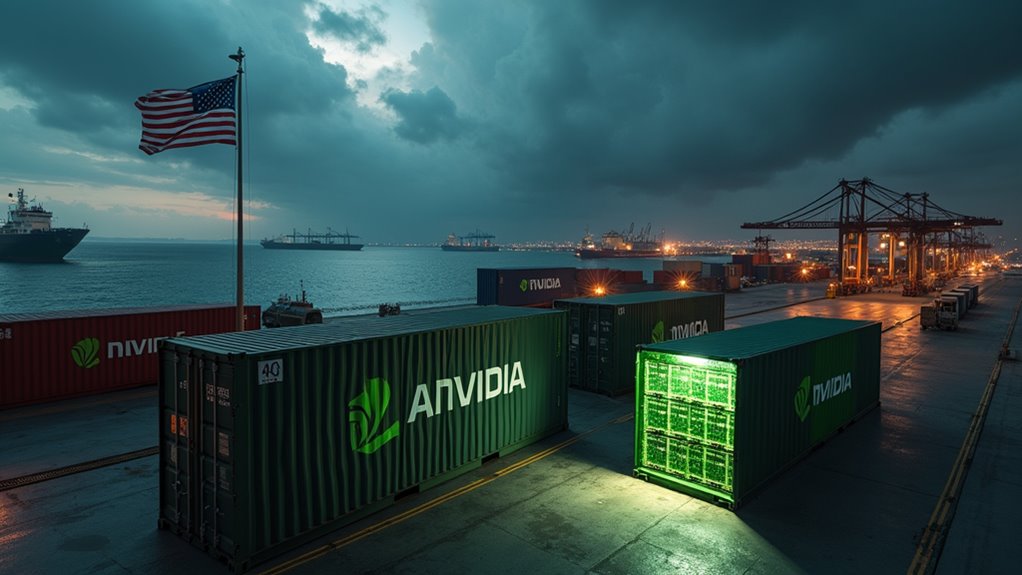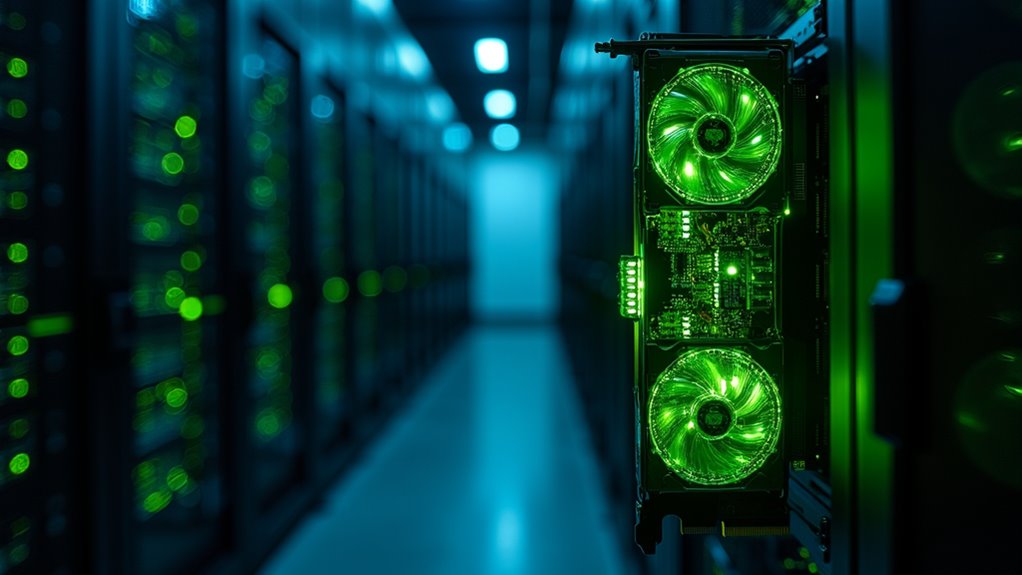Congress is ramping up pressure on Nvidia over alleged AI chip exports to China. Led by Senator Warren, lawmakers have summoned executives for April 2025 hearings amid accusations that the company designs chips to technically comply with—but effectively circumvent—export controls. Nvidia insists it follows all regulations, but critics point to massive shipments valued at $16 billion. Meanwhile, Chinese firms are stockpiling chips faster than Americans hoarded toilet paper in 2020. The semiconductor chess match continues.
U.S. lawmakers have slammed the brakes on Nvidia’s China-bound AI chip express, with Senator Elizabeth Warren leading the charge against the tech giant’s H20 exports. In a flurry of legislative action that has Silicon Valley sweating bullets, Warren urged the Commerce Department to block these advanced AI chips from crossing the Pacific.
You might think selling computer parts is just business as usual, but these aren’t your grandma’s graphics cards. The House Select Committee has accused Chinese firm DeepSeek of using Nvidia chips to sidestep export controls—basically playing a high-tech shell game with America’s semiconductor crown jewels.
Behind closed doors, Nvidia executives have been summoned to Congress like teenagers caught sneaking out after curfew. CEO Jensen Huang even made an appearance at a Trump-era dinner, promising U.S. data center investments faster than you can say “scrutiny sandwich.” Reports suggest that these exports continue while domestic AI developers struggle with serious chip shortages that hinder their innovation and growth.
“We strictly adhere to U.S. government directives,” Nvidia insists, while critics claim they’ve been playing chess with the Bureau of Industry and Security, customizing chips just enough to technically comply with regulations—wink, wink.
The stakes? Those innocent-looking silicon wafers could power everything from China’s surveillance state to military applications. Regulatory frameworks continue to lag behind technology, creating compliance difficulties for companies operating in multiple markets. It’s like selling hammers to someone who keeps building suspicious-looking treehouses aimed at your backyard.
Meanwhile, China isn’t sitting idle. With Huawei stepping up domestic GPU development and companies stockpiling chips faster than toilet paper in 2020, the race is on. Chinese firms are mixing imported and homegrown tech like a technological cocktail—not quite Nvidia-strength, but getting closer. The potential financial impact is massive as Chinese companies sought 1.3 million H20 chips worth over $16 billion before restrictions were imposed.
April 2025 hearings are set to bring more bipartisan pressure, with lawmakers proposing whistleblower incentives that would reward export control tattletales with cold, hard cash and job protection.
For now, the semiconductor chess match continues, with Congress determined not to let America’s AI edge slip away one H20 chip at a time.









